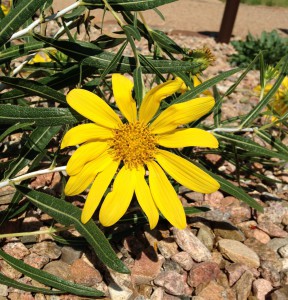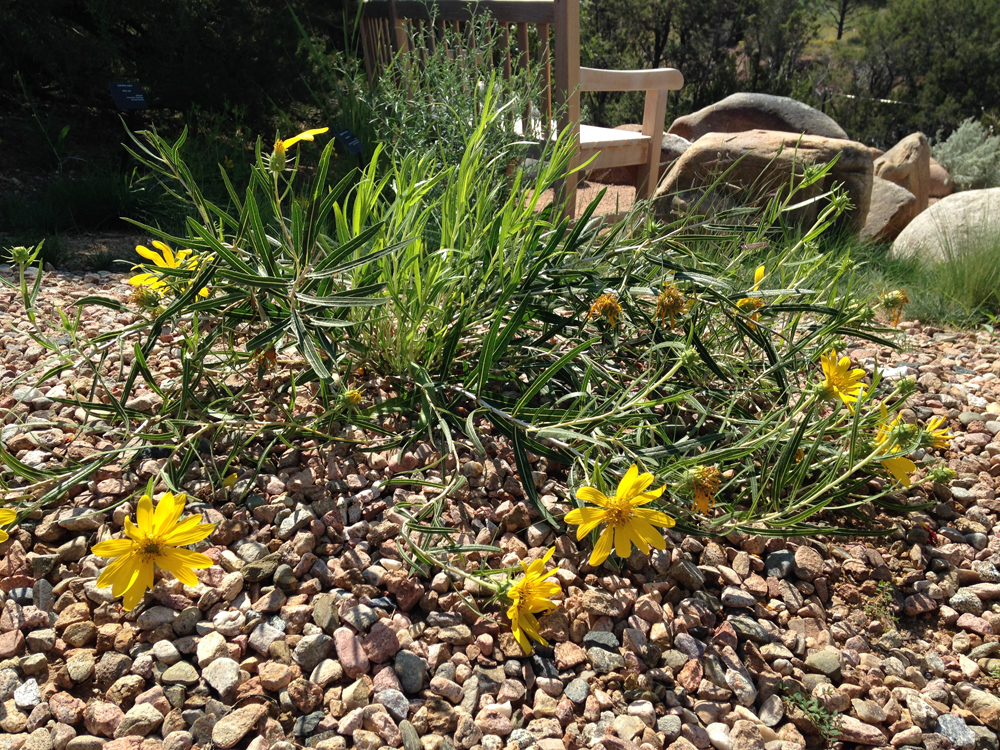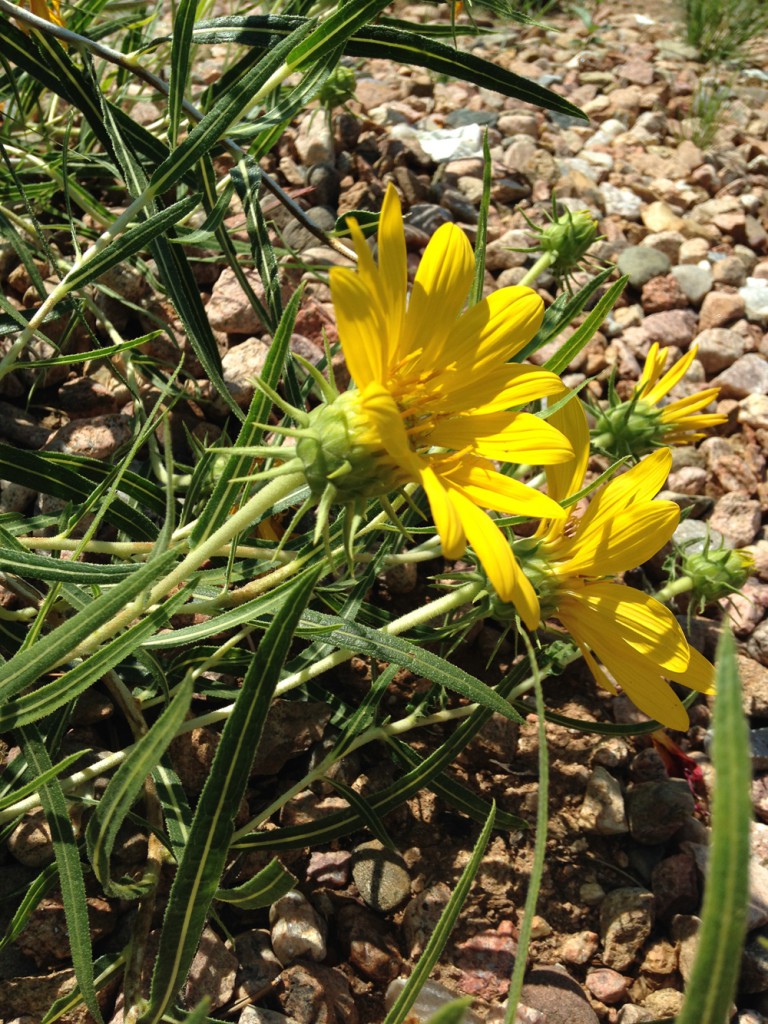Scientific name: Scabrethia scabra
Common name: mule’s ears
Other plants mentioned: Wyethia arizonica and other species
Family: Asteraceae
Article by Jeanne Gozigian

Scabrethia scabra (Photo: Cristina Salvador)
I first met mule’s ears at my daughter and son-in-law’s property, a two -acre spread near Pagosa Springs, Colorado. Coming from the East and familiar with New York State and Adirondack wild flowers, as well as the flowers, trees and shrubs of the Thousand Acre Swamp, outside of Rochester, NY, I was puzzled. What is this prolific flower that looks like a composite that I have never seen before?
Upon looking it up in the Peterson Field Guide, Rocky Mountain Wildflowers, I discovered that the plants that I observed were mule’s ears. Hairy leaves – thus the “mule’s ears”, were on long stems. Yes, they do resemble mule’s ears! The bright, orange/yellow flowers can make colonies of hundreds and thousands of plants in the sunny, low, montane meadows of the Four Corners area of Colorado, Arizona, Utah, and New Mexico.
It is easy to confuse Scabrethia with its close cousin, arrowleaf balsamroot, (Balsamorhiza sagittata). The abundant, orange/yellow flowers of arrowleaf, a close cousin also in the Asteraceae family, grow singly on stems with four- inch wide and six- nine inch long, arrow shaped leaves. Whereas, mule’s ears’ leaves are two to four inches wide and six to nine inches long but spear shaped. Mule’s ears have larger blossoms and may have more than one blossom per stem. Both have hairy leaves but arrowleaf blooms two to four weeks earlier in the spring.

Mule’s ears plant in Ojos y Manos Garden (Photo: Cristina Salvador)
Most of my sources refer to mule’s ears as Wyethia spps., which are other species than S. scabra (rough leaves). Al Schneider of South West Colorado Wildflowers says that a synonym for Scabrethia scabra is Wyethia scabra, but Weber says that it is not a true Wyethia. Others are Wyethia amplexicaulis, which means stem clasping, and Wyethia arizonica. The mule’s ears common to the Four Corners area are often hybridized with amplexicaulis and are known as W. x magna. Confused? So am I! To further confuse us, there is Wyethia helianthoides Nutt., with white or cream colored composite flowers. More complications – helianthoides can hybridize with amplexicaulis to produce a plant with pale yellow flowers! Wyethia angustifolia (narrow leaves) is a species of the eastern Cascade mountains. Let’s just call them all mule’s ears, as what they have in common is belonging to the Asteraceae family and having fuzzy leaves!

Scabrethia scabra (Photo: Cristina Salvador)
Mule’s ears are shrubs and sub/shrubs. All of the Wyethia species were named by botanist Thomas Nuttall in 1834, in honor of Nathaniel Wyeth, a 19th century merchant and fur trader from the East, who sponsored expeditions in the West. He collected specimens in 1832-33. All Wyethia tend to be invasive, referred to as “range pests”, and are subject to crop control measures.
Bear, deer, elk and birds will eat the flowers and seeds. Cattle, sheep and horses leave them alone and do not like the hairy foliage. Seeds of mule’s ears are indigenous food, said to taste like sunflower seeds. Range pests they may be, but they certainly are impressive as fields of golden flowers.
The Plant List finds acceptable the scientific names Scabrethia scabra, Wyethia arizonica, W. amplexicaulus, and W. angustifolia for what are commonly called mule’s ears. If you think that you were confused before, what now? Look for mule’s ears (Scabrethia scrabra) in the Sunset Discovery Walk Area and the Sunrise Discovery Garden (still flowering in September), located in the Ojos y Manos section of the Botanical Garden at Museum Hill. After blooming, it disappears into the earth, only to return again in the spring.
Thanks to Janice Tucker and Helen Woody for proof reading this article.
Sources:
Mule’s Ear California Compassplant/Larner Seeds, www.larnerseeds.com/product/mules-ear
Northern Mule’s Ears, science.halleyhosting.com/nature/basin/sun/daisy/wyethia/wyethia.htm
Rocky Mountain Wildflowers, a Peterson Field Guide, by Craighead, Craighead, and Davis, 1963
Santa Fe Botanical Garden 2017 Plant List for Ojos y Manos
Southwest Colorado Wildflowers, www.swcoloradowildflowers.com
Stearn’s Dictionary of Plant Names for Gardeners, William J. Stearn, 1992
The Plant List, www.theplantlist.org


